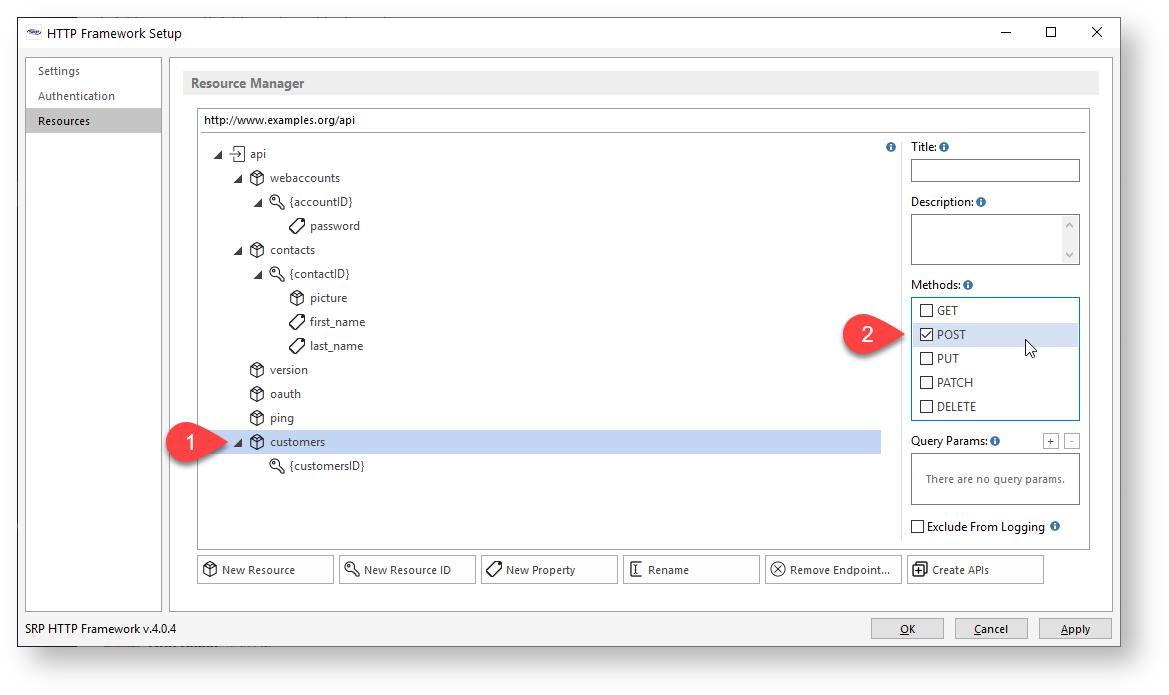Page History
...
Is the resource we just defined singular or is it a collection of other resources? In this case, the customers resource is a collection because it represents multiple customers, each of their own unique identifier. Therefore, we need to define a resource ID so any specific customer resource can be identified.
We start by (1) selecting the newly created customers resource node from the Resource Manager tree view, (2) click on the New Resource ID button, and (3) enter the name of the resource ID:
...
Once a resource endpoint has been defined, we need to define how clients will be able to interact with it by enabling one or more methods. For most database driven resources, CRUD functionality is achieved through the POST (create), GET (read), PUT (update), and DELETE (delete) methods. For our purposes, we'll enable the POST method for the customers resource endpoint (i.e., this is how clients can create a new customer) and we'll enable the GET, PUT, and DELETE methods for the customerID resource endpoint. We'll start by selecting by (1) selecting the customers resource node from the Resource Manager tree view and (2) click on the POST checkbox under the Methods block:
Next we'll (1) select the customersID resource node from the Resource Manager tree view and (2) click on the GET, PUT, and DELETE checkboxes under the Methods block:
...
